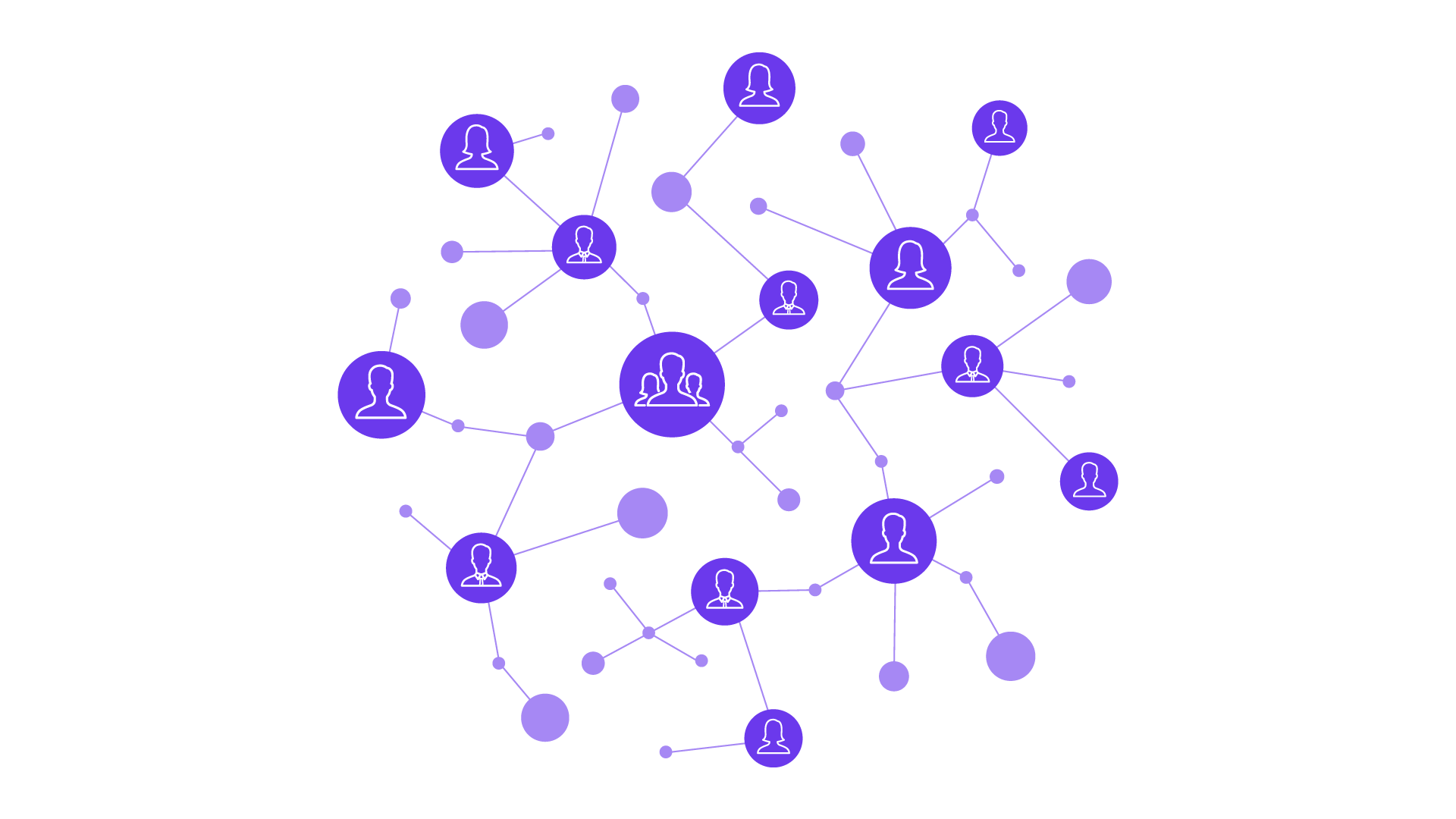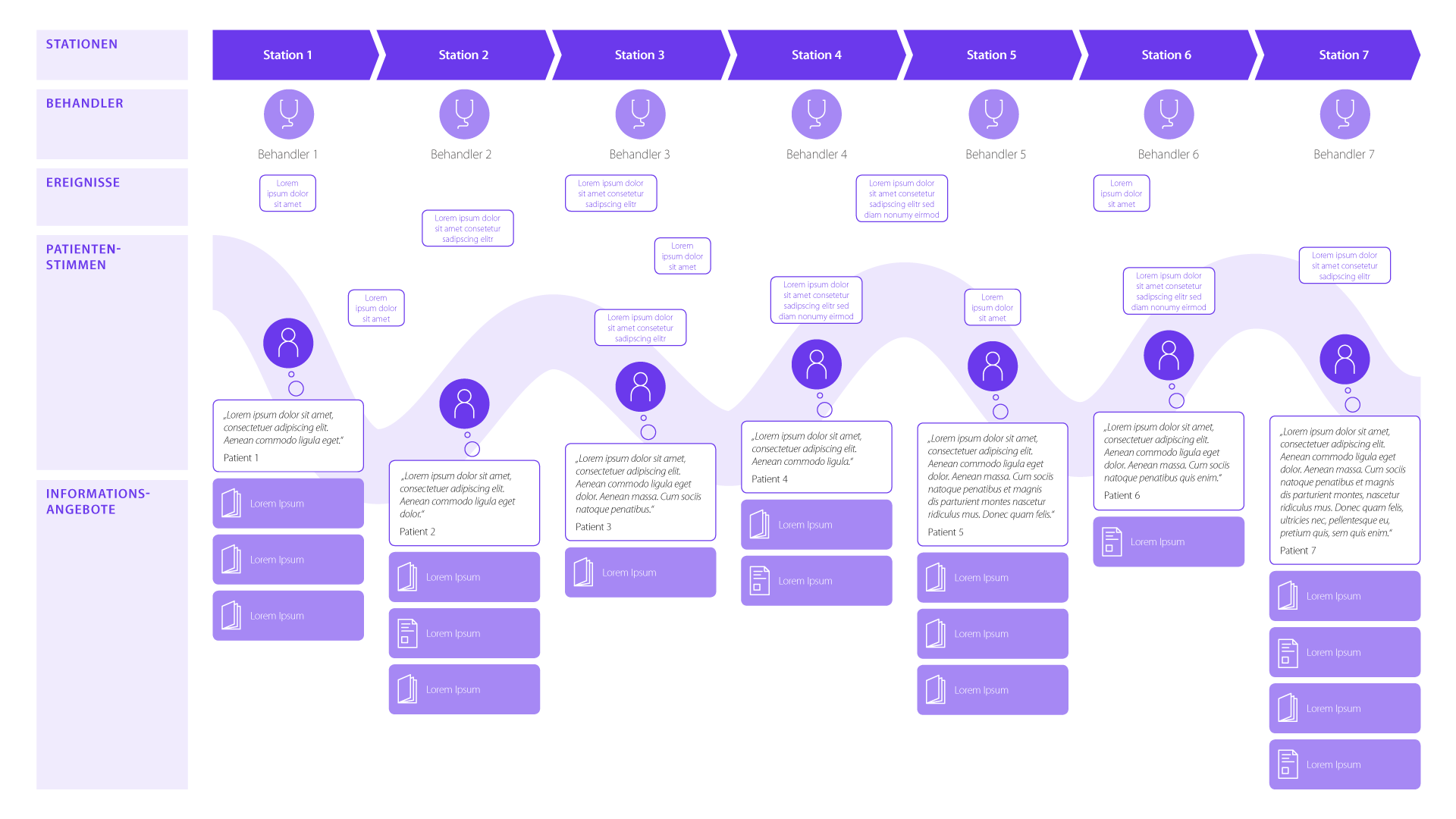»The patient journey is a powerful framework for understanding the market and designing winning strategies.«1
With a patient journey, you will find touchpoints with the patient.
Patient journeys are the basis of your patient strategy
Patient Journeys visualise a patient's path through all phases of their illness. Illustrating such a patient journey will help you get a quick and clear view of how the market works, and which points of contact exist between your company and patients.

A better understanding of illness processes with patient journeys
Illness processes have a substantial impact on marketing in the pharmaceutical industry, medical technology companies, and health insurers. All those involved must understand these processes in every detail. This is where visualisations are very beneficial. A patient journey visually illustrates a patient's path through his or her illness, from the first symptoms to therapy and follow-up. All turnings and crossroads on this journey should be shown and assigned with motives and probabilities of action. Such a presentation often gives rise to new ideas for optimising market access and marketing or reveals medical needs "beyond the pill".

What a complete patient journey provides
- An overall view of a patient and his or her complex journey through the healthcare system
- Integration of the role of everyone involved: patients, industry, doctors, nurses, payers
- Valuable insights concerning reasons for decisions and motives
- The basis for generating new ideas and addressing unmet medical needs
Generation of data for the patient journey
For the implementation of the patient journey, as much data as possible – both qualitative and quantitative – should be collected. Qualitative data are particularly suitable for presenting insights from patients as well as doctors, nurses, payers, and so on. The sources of quantitative data from a patient journey are often extremely diverse. In recent years, real-world data has become increasingly important for recording patient care in a way that is in step with actual practice. Exemplary questions that should be answered by data when creating a patient journey are:
- What is the probability that certain treatment paths will be taken?
- How is the patient population precisely defined?
- How many patients suffer from which comorbidities?
- How many patients reach the next stage?
- How much time passes between different stages of the disease?
- What do patients think about therapy alternatives?
- How high is the adherence?
Emotions and motives
In addition to data and numbers, a complete patient journey should also include emotions and motives of patients and other stakeholders, which come to the fore during the patient journey and become the motive that determines action. To learn about these motives, it can be very rewarding to analyse patient forums. It is often surprising that the focus is not always purely on medical aspects, but that many issues address living with the illness, for instance the effects of the illness on partnerships. The patient journey is therefore not a bare algorithm – it involves emotions and feelings.
Advantages of our patient journeys
Creation of complete patient journeys including data generation
Evaluation of patient journeys with a view on strategic implications
Touchpoints between the company and patients can be seen at a glance
A deeper understanding of medical needs
Identification of market opportunities